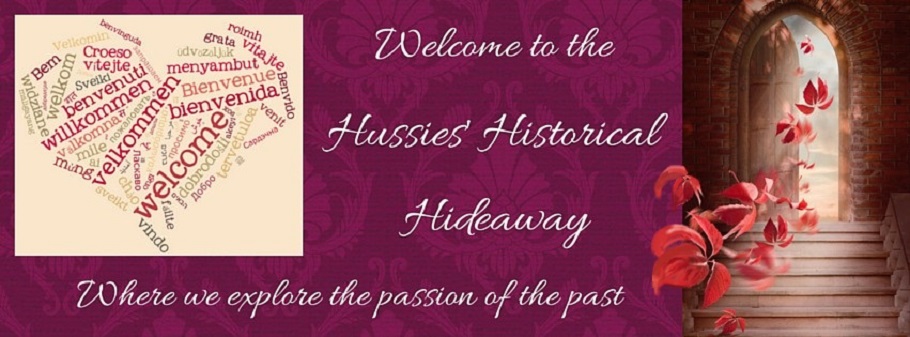‘We’re going to do an historical continuity series,’ my
editor told me last June. ‘It will be Regency, with an Upstairs/Downstairs
theme, and you’d be one of eight authors. What do you think?’
I thought it sounded like a really exciting opportunity, so
I leapt at it. Almost a year on, the first book (a prequel not originally
scheduled) about to be published, and I think I speak for all eight of us when
I say that it was definitely exciting, but also extremely challenging, at times
frustrating, seriously time-consuming, and much more complicated than any of us
anticipated. It was also great fun, and maybe most importantly, we think that Castonbury Park, which has intrigue,
tragedy, and scandalous liaisons galore, is a really different take on the
Regency world.
But back in July last year, we were just eight authors in
three countries and several different time zones, struggling to understand what
on earth we’d got ourselves into. With the first deadlines already looming, we
had to come up with a family to provide the heroes and heroines for each of the
books, a world for them to live in, a timeframe which complemented our existing
historical expertise, and a thread, an overarching story of some sort that
would bind all the books together.
Emails came thick and fast as we debated dates, locations
and names – you would not believe how many emails and how much research it took
to come up with names. As an author you are accustomed to being in charge of
creating your own worlds, your own plot, allowing your characters to go in
whichever direction you choose, whenever you choose. As part of a continuity
team, you are to an extent constrained, something which those of who, like me,
prefer their plot-line to be ‘fluid’, found –
well, quite frustrating!. In a continuity series, you must keep your
story within the agreed timeframe, maintain the setting and be true to the
landscape, make sure that you keep other people’s creations consistent, and,
perhaps most difficult of all, you have to commit to taking the overall story
forward, while at the same time writing a book that still has your hero and
heroine at the forefront. See what I mean about challenging?
After much debate, checking with our editor, more debate,
tweaking, checking and double-checking, we agreed to set our series in the
aftermath of the Napoleonic wars, which had left our wealthy, aristocratic
Montague family in a state of turmoil. One son killed at Waterloo, a missing
heir, monstrous debts, and a duke in decline provided the starting point for
eight linked but highly original stories. We chose Derbyshire as our setting, a
county which is home to one of our authors, we based our stately home on the
real-life Kedleston Hall, which two of our group had visited, and we populated
it with some key servants who would be present in every story.
But the devil, as they say, is in the detail. It was when we
all started writing more or less at the same time, that the complexity of what
we had taken on hit us. What colour were the dining room walls? What kinds of
food did the new French chef like to serve for dinner? What did the Montague
children remember about their dead mother? What games did they play together
when they were younger? Who rode, what horse, which carriage? Did the butler
start out in service as a boot boy or a second footman? And most challengingly
of all, how did the family and household in the next book react to the ending
of the previous one – which is a pretty tricky question to answer, when the
previous book hasn’t actually been written! Not only did we have to understand
our own characters, we had to make sure that the ‘continuity’ characters were
consistent. and we to make sure that if we wrote dialogue for someone else’s
hero or heroine, it sounded right. Now you can see what I mean about
time-consuming – and stressful!
‘We want scandal, scandal, scandal,’ our series editor told
us, and Castonbury Park certainly has
that, with some outrageous relationships between ‘upstairs’ and ‘downstairs’. While
the house and servants are key continuity ‘characters’ which play a role in
every book, some of the stories travel further afield to Spain and to India.
The first book, an ‘extra’ prequel which I’ve written, is
out on 1st June. Flirting with
Ruin is a short story which sets the
scene for the series and introduces some of the main characters. It’s also a
sexy, passionate romance between two people who meet by chance and take a
chance on love.
I hope I’ve whetted your appetite for our Regency continuity
series. You can be sure you’ll be hearing more from us and from Castonbury Park
very soon.
Castonbury Park
Flirting with Ruin (Undone! Prequel) - Marguerite Kaye, June 2012
The Wicked Lord Montague - Carole Mortimer, August 2012
The Housemaid’s Scandalous Secret - Helen Dickson, September 2012
Lady of Shame - Ann Lethbridge, November 2012
The Illegitimate Montague - Sarah Mallory, December 2012
Unbefitting a Lady - Bronwyn Scott, January 2013
Redemption of a Fallen Woman - Joanna Fulford, February 2013
A Stranger at Castonbury - Amanda McCabe, March 2013







